As a way to make us appreciate what we had, I guess, my mother used to tell a girlhood story about trudging through the California foothills gathering red toyon berries to sell for holiday decorations. She wasn't the only toyon bandit. In the 1920s collecting toyon berries was so popular in Los Angeles, in particular, that the state of California passed a law against it. Thus we still can admire the toyon's December show of bright red berries in our parks and wild spaces.
Toyon is also an excellent garden plant (see below). Its other name, California holly, suggests a California "lite" version of traditional English holly; it has bigger, brighter berries and bigger, glossier, greener leaves. I like to look at toyon for what it is: a distinctive reminder of California's own global melting-pot traditions in our gardens as well as in our homes and celebrations.
As a constant weather worrier, I have to say that our distinctive holiday season has already gotten off to a great start: The hills started turning green around Thanksgiving. California's gardens and wild spaces need the rain and snow. Have a happy — and wet — holiday season!
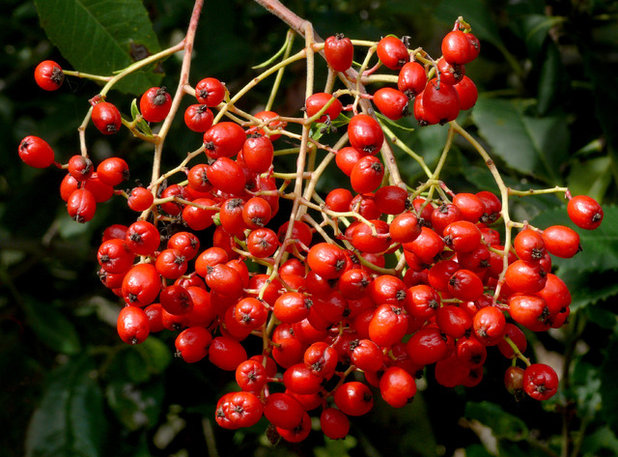
James Gaither
My holiday suggestion: Try to find a spot in your garden for a toyon — for the seasonal pleasure of the bright red berries, the birds they attract and the reminder of what natural California is like in winter. Unlike English holly, toyon (or California holly) is not a buttoned-up formal plant that can be pruned into any shape. It's definitely California casual, always looking a bit wild. Plant it in dry situations with other natives, such as manzanita, live oak, rhamnus or other drought-resistant plants. Use it as a tall background shrub. Develop it as a focal-point, multitrunk tree. Create a tall hedge or screen at the edge of a natural-looking property.
Botanical name: Heteromeles arbutifolia
Common names: Toyon, California holly
USDA zones: 7 to 10 (find your zone)
Water requirement: Light to moderate
Light requirement: Full sun or partial shade
Mature size: 6 to 10 feet tall and equally wide as a shrub; can grow 15 to 25 feet tall as a multitrunk tree
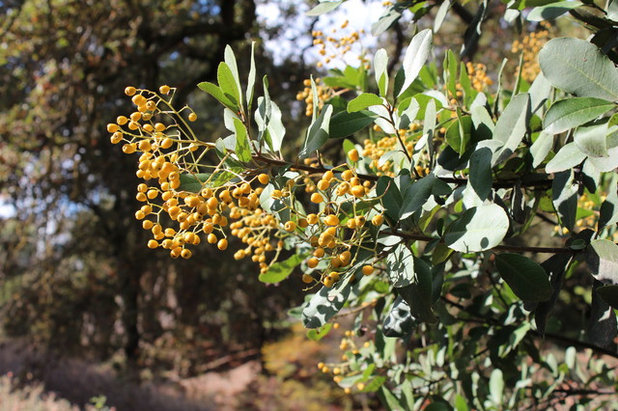 Twisting tradition.
Twisting tradition. There's also a toyon with yellow berries,
Heteromeles arbutifolia 'Davis Gold', a selection from the University of California, Davis. It grows into a big evergreen shrub or small tree, more upright than the red species. Its leaves are less spiny. This variety has another attribute: It's more resistant to fire blight, a disfiguring and often fatal disease that can strike toyons and many other plants.
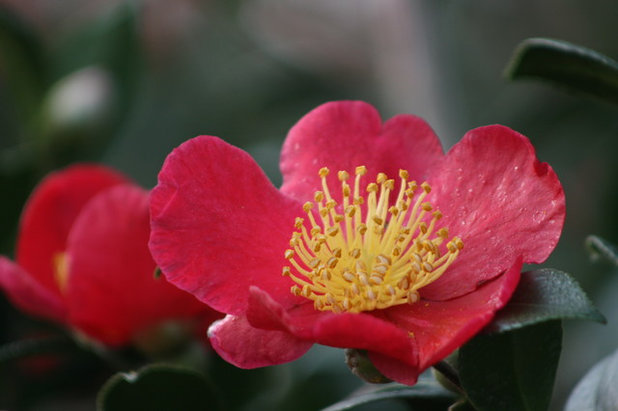
Monrovia
Another holiday performer. 'Yuletide' Sasanqua camellia has the right color and timetable for holiday display. It blooms in late fall and early winter, bright red with a yellow center. The evergreen shrub is tall and slender for a Sasanqua, perfect for a narrow slot. Look for a blooming plant now and put it in a pot near the front door. A few red Japonica camellias also bloom early enough to add holiday cheer: 'Daikagura', ‘Freedom Bell’ and ‘Adophe Audusson’.
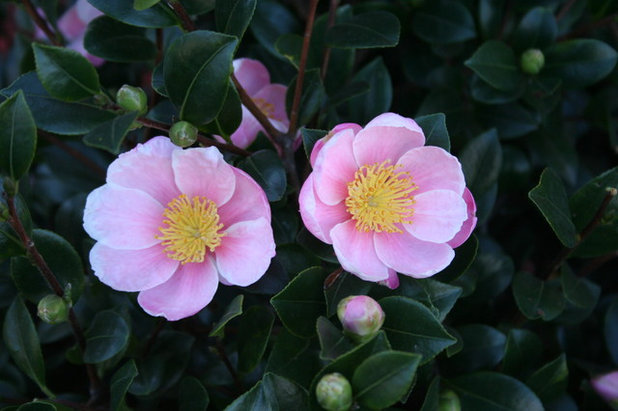
Monrovia
Also just in time for the holidays. 'Pink a Boo' is a new selection of 'Yuletide'. The color is a big departure, but you'll recognize the bright yellow center. It also blooms in early winter and is a great choice for a container.
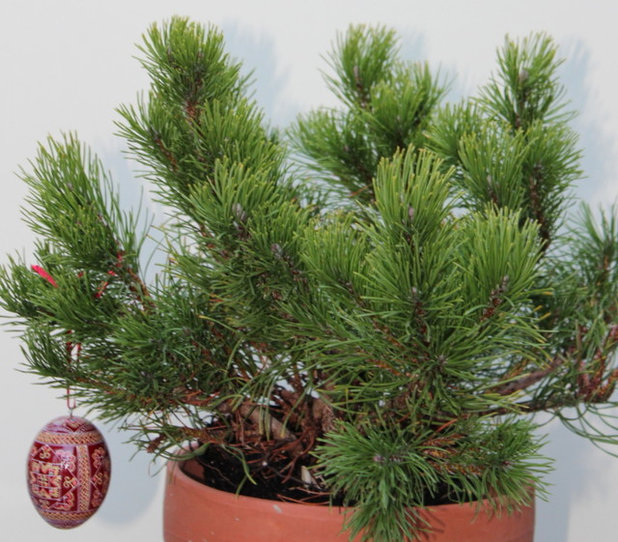 Cut or living or tiny?
Cut or living or tiny? Let's not debate here the greenness of cut Christmas trees versus fake versus living. The Sierra Club breaks it down. Another choice is a tabletop-size tree in a pot — no hand truck needed, no strained back. Bring it indoors for the holidays (maybe in a child’s room) and afterward keep it outdoors for a few years. Garden centers, and even Safeway stores, offer a number of mini tree choices, including violently trained rosemary plants and young conifers that look adorable now but become gargantuan in the garden.
Instead of a cuddly Canary Island pine (mature size: 80 feet), why not choose a slower-growing, naturally dwarfish tree that you won’t have to throw away after the holidays? I like the look of deep green, somewhat irregular pines, such as dwarf mugo pine; a number of varieties, usually less than a foot tall, are available, such as
Pinus mugo pumilio, shown here.
My all-time favoriite is tanyosho pine (
Pinus densiflora ‘Umbraculifera’), a miniature that looks venerable when young, sometimes even sporting tiny cones while still in the nursery can. It’s hard to find, though (good photos of it are hard to find too!). Japanese black pine
(P. thungergii) is charmingly asymmetrical when young but grows pretty fast and won’t last long in a pot; the dwarf ‘Thunderhead’ is a good bet for containers.
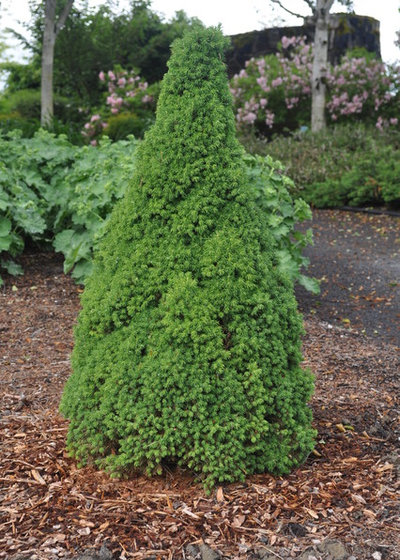
Monrovia
If you like your tiny tree with a traditional shape, look no further than varieties of Colorado spruce, particularly dwarf Alberta spruce (
Picea glauca albertiana ‘Conica’), available everywhere at this time of year. Dwarf Alberta, shown, does well in a pot, but in my opinion it looks pretty stiff and overdressed for most landscape situations.
Basic care, whichever kind you choose. Plant in a pot that's a couple inches deeper and wider than the tree's nursery container. For better looking tree-pot proportions, you can carefully trim off some of the roots to make the root ball smaller; but if you cut off too much, the plant may suffer. Water the plant throughly before bringing it in the house. Check the soil for moisture with your fingers every few days. Move potted plants outdoors after the holidays.
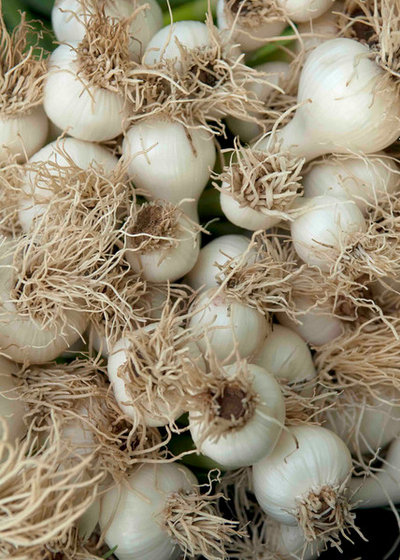
The New York Botanical Garden
Planting garlic as a holiday tradition? Gilroy, at the south end of the Santa Clara Valley, is still nicknamed the "Garlic Capital of the World," although I suspect that honor now goes to a city somewhere in China (Gilroy can freely call itself the "Garlic Processing Capital of the World," as far as I'm concerned). One old Gilroy tradition is planting garlic on the shortest day of the year (very early this year, December 21) and harvesting it on the longest (the first day of summer).
Garlic is fun to grow at home. You don't need much space, and you can experiment with types you won't find at the supermarket — including heirloom varieties such as 'Nootka Rose'. Look for garlic bulbs at nurseries or online. Divide the bulbs into cloves. Plant them in a sunny spot in loose, not heavy, soil. Space the cloves 2 inches deep and 4 inches apart. Water them at planting time and feed the soil regularly. Keep the soil moist until the top growth starts to dry — just before the time to harvest your crop with a spade (dig carefully).
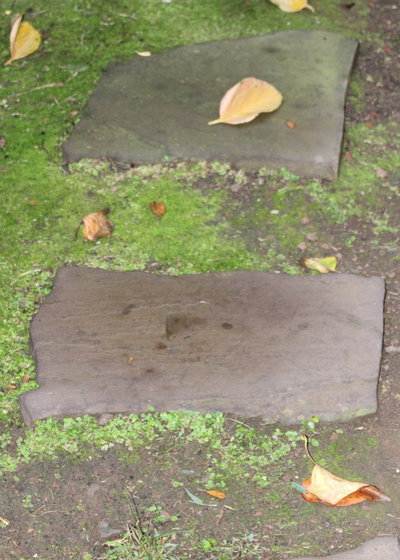 Keeping your feet dry.
Keeping your feet dry. Here's a quick solution for a winter-soggy path in a more casual part of the garden. These are just bluestone paving slabs embedded shallowly in soil. Space pavers by measuring your normal pace. To put them in place, dig a shallow hole about half their depth, damp down the soil and lay the slabs down; fill in around them with soil. In this shady spot on the side of a house, there's a rainy-season bonus: Natural moss adds a touch of green and goes away in dry weather.
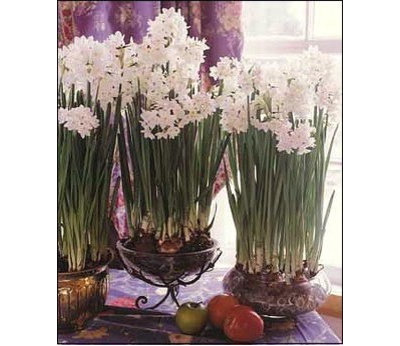
Easy to Grow Bulbs
Paperwhites 'Ziva' - $18.36
For kids who can't wait. My son and daughter-in-law took me along as an adviser of sorts on a nursery shopping trip to buy spring-blooming bulbs for their kids' preschool planting project. I'm all for introducing kids to the world of nature, but I couldn't help wonder if the 3-year-olds will make that connection between the brown things bought in October and the red tulips and yellow daffodils they'll see next April.
Is there something more immediate? Don't say "chia pet." You can easily find speedy, indoor-blooming bulbs packaged for the holidays. Bright red amaryllis will produce leaves in three or four weeks, and blooms in a couple of months. Fastest from bulb stage to bloom is the classic paperwhite narcissus; 'Ziva' is shown here. The pure white flowers will perfume a room with their sweet scent. Start as few as three or four bulbs in a bowl with pebbles and place the bowl near a sunny window. (Directions usually come with the bulbs.) After bloom, transplant the bulbs into your garden for flowers next winter.
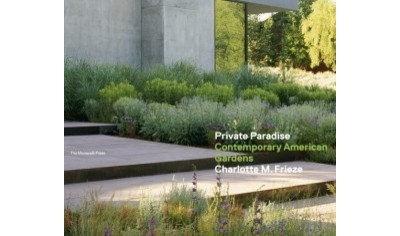
Private Paradise: Contemporary American Gardens, by Charlotte M. Frieze - $65
As a gift or for your own inspiration. I don't remember seeing any really notable, giftworthy books on garden design this past year (did you see any?), but here's one published in 2011 that struck me with its insightful design advice and stunning photos:
Private Paradise: Contemporary American Gardens by Charlotte Frieze (the former garden editor of the sadly defunct
House & Garden magazine). The book brings together the work of leading landscape designers across the country: Raymond Jungles, Florida; Thomas Wolz, Virginia; Kathryn Gustafson, Seattle; Ken Smith, New York. Of course, California is well represented by Marta Fry, Topher Delaney, Ron Lutsko and Pamela Palmer.
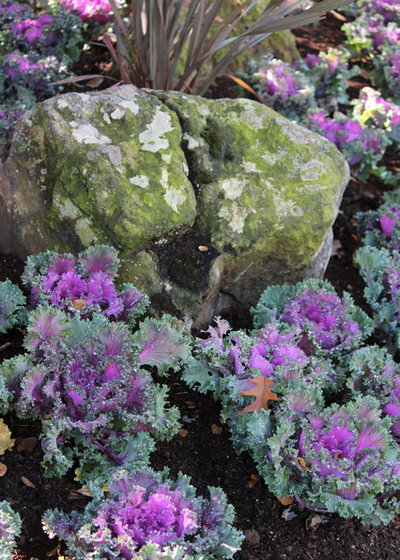 What else can you do in December in your California garden?
What else can you do in December in your California garden? Of course, your holiday plans, along with the weather, will dictate what you can do. There are plenty of satisfying projects if you have the time and the soil is not too wet — a lot of rain would be welcome!
Plant cool-season annual flowers. You can still can plant cool-season annuals (pansies etc.) and vegetables (peas etc.), or flowering kale (shown), which is a flower-vegetable combo. Kale's colorful foliage gives it the advantage of looking good as soon as you plant it.
Plant bulbs. Make sure tulips have been chilled in the refrigerator for at least four weeks. Daffodils can go in the ground as is.
Watch for snails and slugs. They proliferate in cool, damp weather — but thankfully, really frosty weather puts a damper on their activity.
Clean up. Rake leaves; start compost. Especially keep soggy leaves off your lawn.
Provide frost protection. On the coldest nights, move tender container plants under cover; under an eave is usually enough, except for the most tender plants and the coldest nights. Make sure plants are well hydrated before the frost hits.There are frost-protection products at local nurseries, but my thinking is that it's better not to have plants that need this much pampering.
Care for a living Christmas tree. Before bringing a tree into the house, wash off the foliage and give the pot a thorough soaking.





